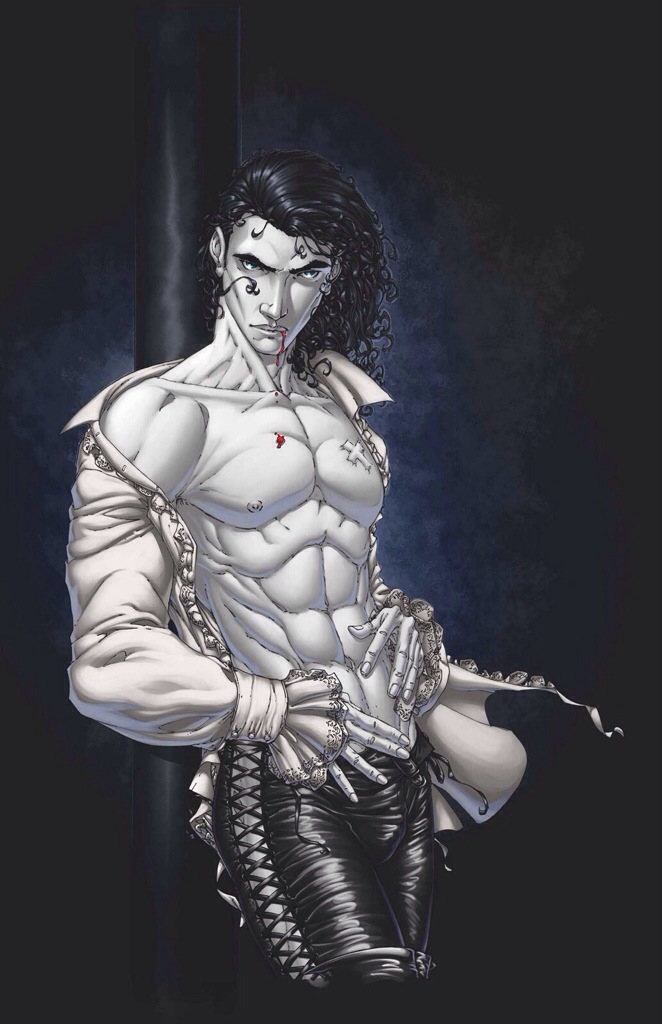Writers are always being told – show, don’t tell. That’s great advice, but what the heck does it mean? It took me years to figure it out as a beginning writer, but once I did it became a filter I ran scenes through whenever my writing felt flat, or lifeless. If you’re a beginning writer thinking, great for her, but how does that help me figure it out, just be patient, because I’m going to give you some examples from the book I’m currently writing. It’s the twenty-third novel that I’ve written in my Anita Blake series, and my thirty-sixth novel counting one short story anthology, called Strange Candy. Why not tell you the title of the book I’m going to use as an example, because it’s still untitled.
Jean-Claude was first introduced in, Guilty Pleasures in 1993. One of the true challenges of being a series writer is to keep long running characters fresh for you as a writer, and for the readers. Both the ones that have been reading from the beginning and for the ones that have just discovered your books, and jumped in at the end. If you’re just starting out and haven’t got first book published, you may think, why should I care? Well, hopefully years from now you’ll be writing your twenty-something book, and then you will care, or I hope you will care as much about your characters as I do mine.
I wrote Jean-Claude’s first introduction in my current novel like this:
“Jean-Claude sat behind that huge desk and that gleaming display of matrimonial treasure, but none of it was as pretty as he was, and I didn’t think it was just me being in love with him that made me think that. He had been a ladies’ man for more centuries than our country had been in existence. He still occasionally appeared on stage at Guilty Pleasures, the strip club he owned, and had managed for years. On nights when he was billed as the star attraction we couldn’t get all the customers in the club, even if we were willing to make the fire marshal unhappy.”
It’s not a bad start, but it tells you Jean-Claude is attractive and sexy enough to be a stripper and a seducer of women, but that doesn’t tell you anything about what he really looks like. People have very different ideas of what attractive means, so the reader may fill in the blanks with the a totally different looking character from the above, because I’ve told them he’s handsome, even sexy, but I haven’t shown it, I haven’t proved it to the reader, and that’s really what showing vs. telling is, proving to the reader that the character is handsome, sexy, or whatever. You have to make your reader, see, feel, taste, touch, believe.
So I rewrote the scene:
“Jean-Claude sat behind that huge desk and that gleaming display of matrimonial treasure, but none of it was as pretty as him. His black hair curled softly past his shoulders mingling so perfectly with the velvet of his jacket that it was hard to tell where one ended and the other began. The shirt that peeked from the jacket was scarlet, a red that looked fabulous with the hair and that unearthly white skin of his, a perfect whiteness that no living skin could rival. he was very pale tonight, no blush of color to his face at all which meant he hadn’t fed yet. There was a time I couldn’t have told, but I’d been studying his face and moods for years. Once I had refused to be food for any vampire, even him. Now the thought that he hadn’t fed, and that it could be part of our foreplay tightened things low in my body so hard and sudden that I had to reach for the edge of the desk to steady myself, and I hadn’t even gotten to his face.
I raised up to finally look into that face and that near perfect curve of cheek, the kissable lips, and finally the coup de grace of his eyes. They looked almost black in the overhead lights, but some gleam always seemed to show that swimming blue like deep sea water where the monsters swim, and there are wonders to behold. His dark eyelashes were actually double-rowed on top so they looked like he’d used mascara, but he never had to, and then the perfect arch of black eyebrow . . . he looked too beautiful, too perfect, like a work of art instead of a person. How did this man love me? But the smile on his face, the light in his eyes, said plainly that he saw something wonderful when he looked at me, too. I didn’t know whether to be flattered, amazed, or ask why me? Why not a thousand more traditionally beautiful women? he could have had movie stars, or models, but he’d chosen me. Me, too short, curvy even with my gym workout, and scarred from my job, still struggling to heal all the issues life had saddled me with, and yet, he smiled at me, held his hand out to me. I went around the desk to take that offered hand, but I didn’t feel like the princess to his prince. I felt like the clumsy peasant to his very, regal King. ”
Do you see what happens when you show, rather than tell? The above didn’t just show that Jean-Claude is gorgeous, but it also revealed Anita’s character and inner world, too. It also says something about Jean-Claude that wouldn’t have been on the paper if I hadn’t shown his appearance through Anita’s eyes, and let her show her feelings about him and herself.
Telling is literally telling the reader what they should believe, but showing let’s them see it, feel it, experience it for themselves much more viscerally. Telling skims the surface like a bare brush of lips, the way your aunt kissed you when you were a kid. Showing digs deeper, it’s a lover’s kiss, that presses so hard against your mouth that you have to open our lips to them, and let their tongue slide inside you. Telling is having to kiss someone; showing is wanting to kiss someone.
I don’t want to tell you that Jean-Claude is hot, and Anita is uncertain of her own beauty, I want to show you.
Show, don’t tell.

Jean-Claude by Brett Booth from the comic adaptation of Guilty Pleasures


